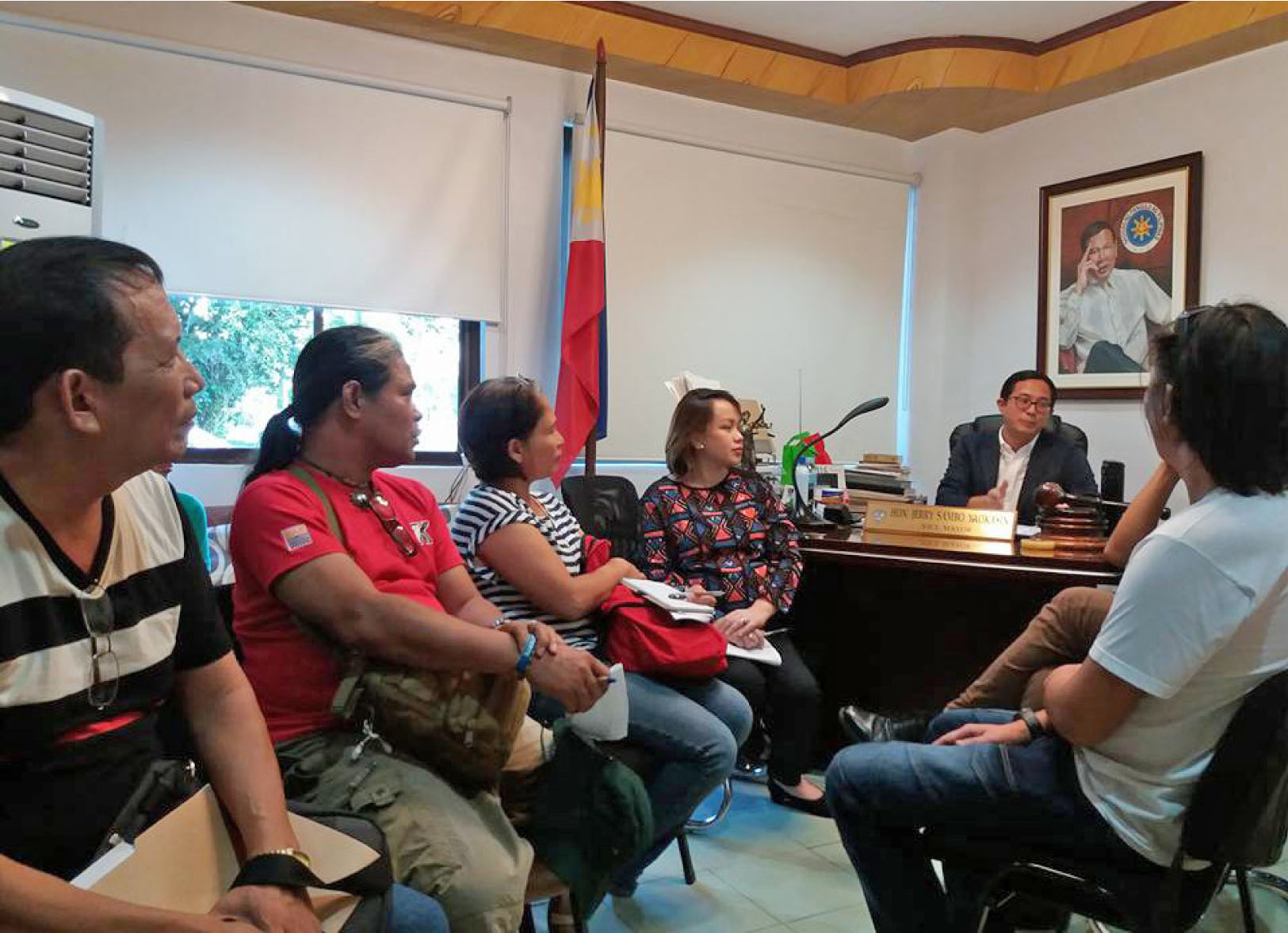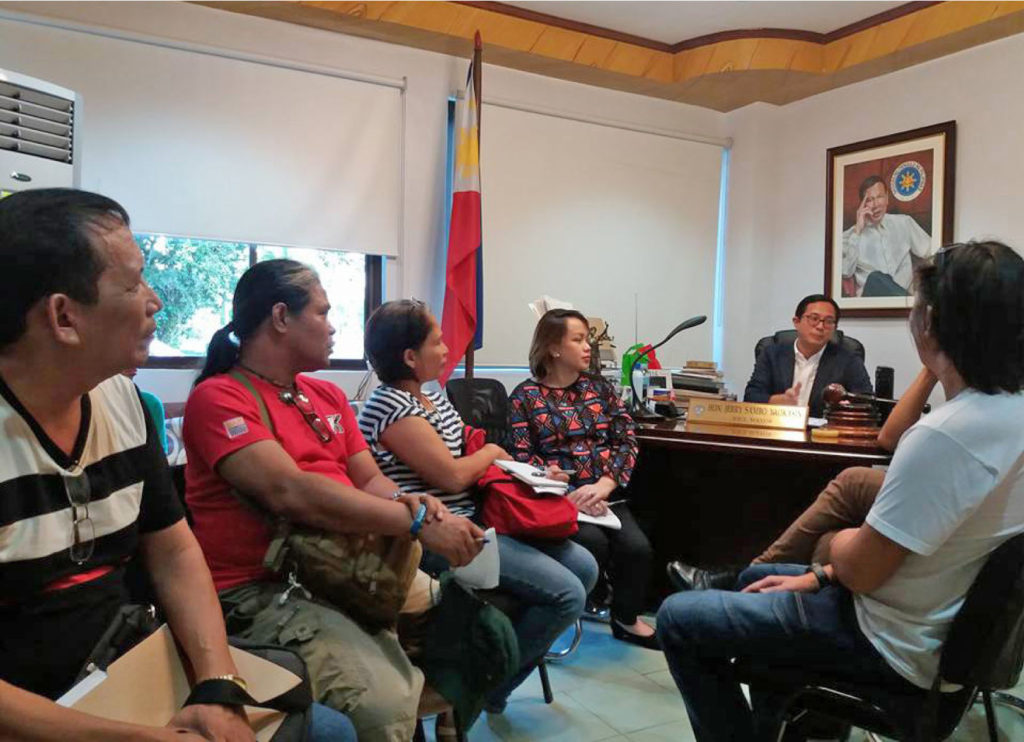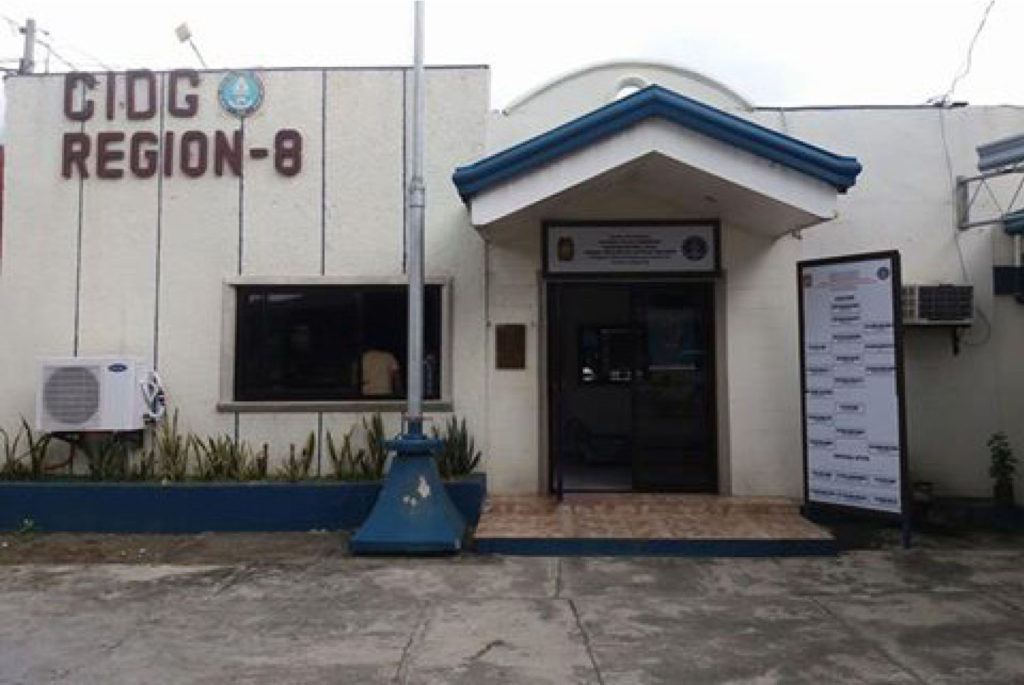TACLOBAN CITY – Eight rural health units in Leyte will be rehabilitated by the Second Leyte Engineering District (2nd LED) of the Department of Public Works and Highways (DPWH) through funds provided by the Department of Health (DOH).
Under the Health Facilities Enhancement-Program (HFEP) of the Department of Health (DOH), this ensures the construction, upgrading, enhancing, equipping of all necessary healthcare facilities particularly in the barangay.
In Leyte’s second district, a total P 25 million in budget is given for the rehabilitation of rural health units in Capoocan, Jaro, Pastrana, Burauen and Carigara.
2nd LED District Engineer Carlos Veloso assured that the rehabilitation of these facilities will promptly be undertaken and are right on track of projected date of completion.
Facility design will also take into account climate change impacts.
Veloso said that just like the way they have built schools, buildings for the RHU will also be designed to withstand strong winds and heavy downpours during the typhoon season.
When supertyphoon “Yolanda” devastated Leyte in 2013, many RHUs in municipalities were damaged which made healthcare delivery critical to all affected communities.
The rehabilitation of these RHUs will for more healthcare facilities for children and the elderly, consultation rooms, minor surgery and treatment rooms, pharmacy, dental clinic, labor room, breastfeeding area and birthing clinic, among others.
The facilities enhancement program of the DOH builds rural health care infrastructure in the selected districts to a level such that they have the physical capacity to address the service requirements of the National Health Program (NHP).
(AHLETTE C.REYES)
Rural health units damaged by “Yolanda” to undergo repair
“Yolanda” survivors staged protest on planned transfer to unfinished relocation sites


(JAZMIN BONIFACIO)
City officials assured to look at their grievances
TACLOBAN CITY- Close to 500 individuals staged a protest rally at the Sangguniang Panlungsod building to dramatize their opposition on the reported plan of the city government to transfer them at the relocation sites before the end of this month.
The rallyists, who all lost their houses when supertyphoon “Yolanda” hit Tacloban three years ago, claimed that the resettlement sites are not yet ready for occupancy and if ready, there are no provision on water and power.
“We are not opposing on the transfer but what we are asking is for the government to make these houses liveable,” Belinda Ginu-o, a resident of Barangay 90, Baybay, San Jose district.
City officials like Vice Mayor Jerry Yaokasin and councilor Aimee Grafil, who chairs the committee on urban poor and resettlement, assured the families that they would seriously consider their grievances.
The move to transfer the families living in coastal areas, declared as danger zones in the aftermath of the storm surge generated by supertyphoon “Yolanda,” was in the wake of pronouncement of President Rodrigo Duterte during his visit here in the city on the third year commemoration of Yolanda’s onslaught.
The President directed government agencies to transfer all the families still living in temporary shelters to include those in danger zones to the permanent resettlement sites.
In Tacloban, more than 14,400 families who lost their houses due to Yolanda are to be relocated. However, three years after the massive disaster, only more than 2000 families have been permanently transferred to the relocation sites located in the northern part of the city.
While there are houses, constructed by the National Housing Authority, that could be occupied by the families, lack of water supply, power and livelihood opportunities stops the beneficiaries to transfer to these housing units.
Joli Torella of the Urban Poor Associates (UPA) said that they received an advisory that the city government of Tacloban plans to undertake a “massive” demolition of structures in areas located in the “no build zones.”
According to Torella, such move will lead to force eviction of around 1,000 families per week living in coastal areas, particularly in Magallanes and San Jose districts.
The UPA provided assistance like temporary shelters to the families located in these areas. (JAZMIN BONIFACIO)
President Duterte’s speech earns praises from ‘Yolanda’ survivors
TACLOBAN CITY – Survivors in coastal communities badly hit by supertyphoon “Yolanda” has welcomed President Rodrigo Duterte’s directive to move them to permanent homes as early as next month.
In the past two years, single mother Marilyn Singh, 51, and her children and grandchildren have been staying in a bunkhouse.
She commended the President for giving attention to them. “I agree with President Duterte. Why delay the housing projects if funds have already been available?” she asked.
Lucia Etolle, 61, shares a room with 10 other family members in the same bunkhouse made out of coconut lumber and plywood.
She lauded the President for being apologetic to the plight of survivors, who are compelled to stay in low lying coastal communities and makeshift houses.
“Suffering for nearly three years is too much. We really want to move to a new house with own toilet, stable water supply, and electricity,” said Etolle, who earns meager income from tailoring.
Weeks after Yolanda devastated the region, the government built bunkhouses for displaced families.
Each unit is divided into 24 rooms for each family. The room measures 8.64 square meters—roughly the size of two ping-pong tables.
The two mothers are among the 50 families still living in bunkhouses built in a government-owned lot in Barangay Kalipayan, this city.
These families are scheduled for transfer to housing projects in the northern part of the city funded by an international non-government organization.
In Brgy. San Roque, Tanauan, Leyte several families opted to stay in makeshift houses built near the shoreline even after the turnover of permanent housing units to them.
“Living here is more convenient. It’s closer to the sea where we earn about P300 daily from fishing. What’s the point of having a new home if we have nothing to eat?” asked Yiyi Quista, 44, a mother of five.
“With the President’s order, I am positive that concerned government agencies will address the livelihood aspect of relocation,” she added.
During the 3rd Yolanda anniversary on November 8, Duterte asked concern agencies to fast track the assistance to survivors, especially housing-related concerns.
“I am not satisfied. In three years only few families were transferred to their permanent houses. The national offices, the respective departments, they’re only given one month to process the paper and it must be out,” the President said.
Thousands of Yolanda survivors converged in town plazas and mass grave sites to celebrate resilience and remember those who perished when Yolanda the Visayas in 2013.
(SARWELL Q.MENIANO)
3rd Yolanda anniversary: Mayor Cristina urges Taclobanons to keep the faith, hope for a better city
TACLOBAN CITY- “Keep the faith and hope that we will rise again,” so said Mayor Cristina G. Romualdez after the commemorative mass at the Tacloban City Convention Center, this city on Tuesday (Nov.8) coinciding with the 3rd anniversary of supertyphoon “Yolanda” attended by key national government officials and foreign dignitaries.
Attending the ceremony remembering the onslaught of Yolanda were former Tacloban mayor Alfred Romualdez, former senator Ferdinand “Bongbong” Marcos, Jr., Rep. Yedda Romualdez, ViceMayor Jerry Yaokasin, Raymund Romualdez and formercongressmen Ferdinand Martin Romualdez and Anton Lagdameo of the 2nd district of Davao del Norte.
Also joining the scores of Tacloban residents who attended the event were national officials and foreign dignitaries, namely Senator Cynthia Villar and Climate Change Commissioner Emmanuel de Guzman,US acting Ambassador to the Philippines, Michael Klecheski, Israeli Ambassador Effie Ben Matityau, Bangladesh Ambassador John Gomes and a representative of the Australian Embassy.
The commemorative mass was officiated by Naval Bishop Filomeno Bactol.
According to Mayor Romualdez, the city government is concentrating its efforts on transferring Yolanda–affected families living in transitional shelters to permanent homes.
Currently, the city government has helped move 2,500 families from temporary shelters to their permanent homes at the National Housing Resettlement Project situated at North of Tacloban. Still lacking potable water amenities, the city government conducts daily rationing of water to the transferred families.
The new township is where the city government plans to transfer some 10,000 to 15,000 families living in identified danger zones in the next two years.
Tacloban North has been identified in hazard maps by the different DOST agencies as some of the safest areas in the City.
Three years after Yolanda, tourism in the city is vibrant according to Mayor Cristina; from 40 hotels before Yolanda, Tacloban now has 63.
Speaking at the commemorative program, she thanked the various international non-government organizations which contributed to the rehabilitation of Tacloban and encouraged Taclobanons to pin hopes on the City now heeding the lessons of Yolanda.
Rep. Romualdez, on the other hand, said she re-filed in the House of Representatives a proposed law authored by former senator Marcos which seeks to create a national agency that will oversee government emergency and rehabilitation efforts during a disaster.
Recalling what happened at the height of Yolanda three years ago, former Mayor Alfred Romualdez said the city government evacuated some 7,000 residents to the Astrodome which only has a total capacity of 3,500.
He also contradicted reports that the evacuation center had several casualties.
Former Mayor Romualdez and Senator Bongbong Marcos were presented with certificates of appreciation
Capping the commemorative program was the launching of the book“Legacies of Leadership Book II”, which compiled the personal narratives of Yolanda survivors. (HENRY JAMES ROCA/Tacloban City Information Office)
Media man Caorte willing to appear before the Senate
TACLOBAN CITY-A radio reporter, based this city, mentioned during a Senate inquiry on the killing of Albuera Mayor Rolando Espinosa Sr., said that he is willing to appear before the body and clear his name.
Eulogio Caorte, 50, who works at DyBr (Kaugop Radyo), said that he has nothing to hide or fear considering that he was in the area to cover the incident.
“I was part of the team, yes but I was not part of the operation. I was not even aware who was or were the subject or subjects of the operation except that a search warrants are to be served by the CIDG(Criminal Investigation and Detection Group),” he said during an interview.
The radio man stressed that he was not informed by the CIDG raiding team where they were going saying he knew if it was part of the police operations.
“I only learned about where we’re heading when the vehicles we were on board stopped to a familiar land mark which was the office of the DPWH in Baybay City,” he said.
The Leyte subprovincial jail in Baybay is located near the office of the Department of Public Works and Highways (DPWH) located in Barangay Hiposngo, a kilometer away from the city center.
Caorte claimed that when the CIDG team, headed by Inspector Leo Laraga entered the facility, he was prohibited by Laraga to join the group to enter the building where the prison cells were located.
“I was inside the compound but not inside the building,” he said.
Minutes after they arrived at the facility, Caorte said,he heard burst of fire followed by a commotion then another burst of fire.
“I later learned that the subjects were Mayor Espinosa and one (Raul) Yap,” Caorte said.
He also said that while he knew that Espinosa was among the prisoners at the jail facility, he had no idea that the subject of the operation was Espinosa, father of Eastern Visayas drug lord.
Caorte said that he did not see a firearm near the dead body of Espinosa saying that he was able to see the corpse of Espinosa after the team of the Scene of the Crime Operatives (SOCO) from Ormoc City finished their work.
Caorte said that he is willing to appear before the Senate to answer senators’ questions on the matter.
“I will only tell them what I knew. I was there to cover the operation and nothing else,”Caorte said.
During the Senate inquiry on Thursday(Nov.10), the senators asked that Caorte be summoned to shed light on some issues related to the death of Espinosa.
(JOEY A. GABIETA)
Controversial CIDG-8 chief sacked after Espinosa killing at Leyte sub- provincial jail
TACLOBAN CITY- For leading a controversial raid at the Leyte sub-provincial jail that led to the death of Albuera Mayor Rolando Espinosa Sr., the regional chief of the Criminal Investigation and Detection Group (CIDG), Supt. Marvin Marcos was sacked from his post.
Marcos led the 15-men CIDG team that went to the Baybay City-based jail facility on November 5 and conducted the raid that resulted to the death of Espinosa, father of Kerwin, Eastern Visayas drug lord.
The operation of the CIDG was by virtue of a search warrant based on their information that Espinosa was keeping a firearm.
Also killed during the raid was Raul Yap, known to be a drug pusher.
Aside from Marcos also relieved were Supt. Santi Noel Matira; Chief Inspector Leo Laraga, who applied the warrants; Senior Inspectors Eric Constantino,Deogracias Diaz III and Fritz Blanco; SPO4s Melvin Cayobit,Juanito Duarte;SPO2 Alphinor Serrano, Jr.; SPO1 Benjamin Dacallos; PO3s Norman Abellanosa and Johnny Ibanez;PO2 Neil Centino and PO1s Lloyd Ortigueza, Bhernard Jane Gisma,Jerlan Cabiyaan and Divine Grace Songalia.
The relief order was issued by Police Director General Rolando “Bato” de la Rosa.
All were assigned at the Personnel Holding and Accounting Unit in Camp Crame.
The death of Espinosa sparked a Senate inquiry with senators describing the act as “premeditated” with the intent to kill Espinosa, 54.
The senators questioned the raid of the CIDG raising questions like why they have to secure a search warrant from a court outside Leyte; disarming jail guards and seeking SOCO (scene of the crime operatives) team ahead of the time Espinosa and Yap were declared dead.
Marcos, however, maintains that their operation was a “legitimate operation” meant to recover contrabands in possession by Espinosa and Yap.
“We did not plant any evidence nor take away the hard drive of the CCTV of the jail facility,” the axed CIDG chief said.
A three-man team of CIDG- Manila composed of Senior Superintendent Ramon Rafael, lawyer Virgilio Pablico of the CIDG legal division, and Senior Police Officer 1 Rudy Gahar) conducted their own investigation over the incident. (JAZMIN BONIFACIO)


